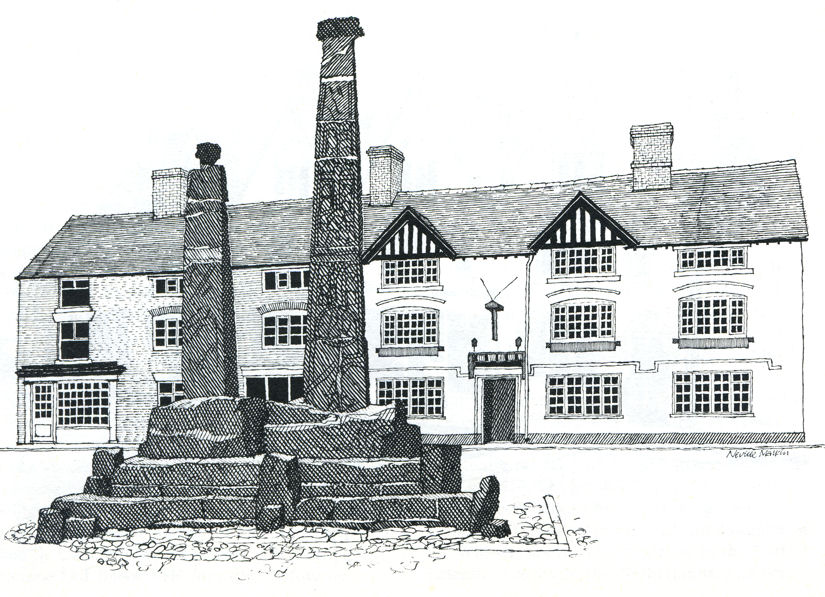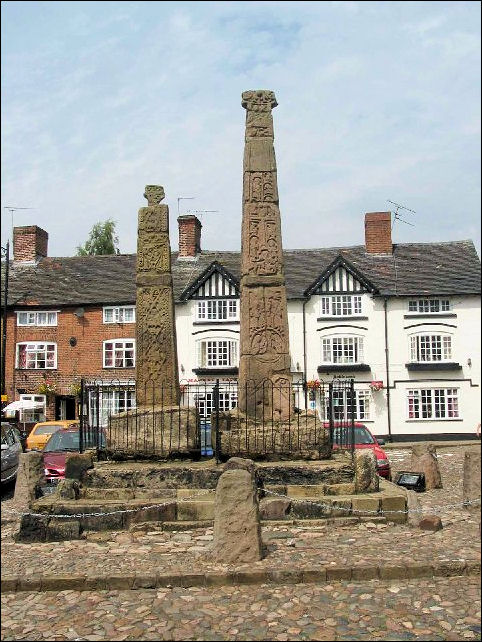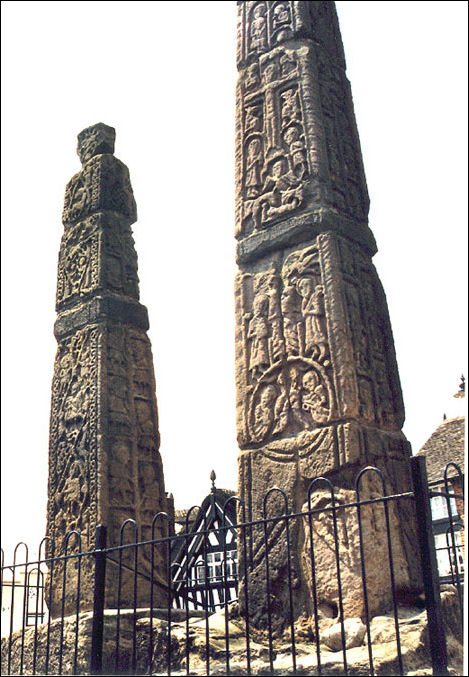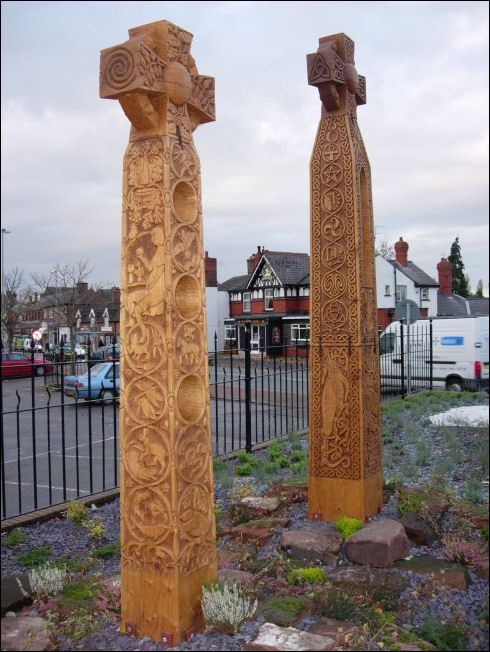|
|
|
![]() back to "The Grand Tour" index
back to "The Grand Tour" index
Neville Malkin's "Grand Tour" of the Potteries
buildings north of the Potteries
![]()
![]()
![]()
next: half timbered
houses, Sandbach
previous: Gothic Shops
and houses, Audley
contents: index of buildings north of the Potteries
|
No 30 - Saxon
Crosses, Sandbach Now grade I listed with the following description..... MARKET SQUARE 1. 5144 (In the Centre) Sandbach Crosses Celebrated pair of Anglo-Saxon crosses. Probably early-mid C9. Original site unknown and probably brought here in late Middle Ages. The crosses were thrown down, either after the Reformation or during the Civil War and the parts dispersed. In 1816 they were recovered as far as possible and re-erected, the crosses being set in stone sockets and placed side-by-side on a 3-stepped stone base. The north, and taller, cross has a mutilated head and the south one a truncated shaft with mutilated head from another cross. Both crosses are decorated on all faces with carved figures, animals, vine scrolls etc, and the north cross has panels depicting biblical scenes. |

Saxon Crosses, Sandbach
pen drawing by Neville Malkin -
June 1976

Sandbach Saxon Crosses
Two 9th century stone crosses,
decorated on all faces with carved figures, animals and vine scrolls.
The taller cross shows biblical scenes and has a mutiliated head.
The shorter cross has a truncated shaft with the mutilated head of another
cross.
They were taken from their original site and broken up.
The fragments were eventually restored to their present site in 1816.
The style and themes of the sculpture indicate contact with the wider
Anglo-Saxon world,
suggesting Sandbach was a significant centre of pre-Viking sculpture in the
9th century.
Photo: © Dennis Thorley July 2005
licensed for further reuse

Photo: © Angie Lake March 2005

At the start of October 2006,
these large wooden crosses paying homage to original Saxon Crosses were
unveiled.
The Sandbach Crosses are tucked away; these modern versions are more prominently
situated,
and also intended as an 'advert' for the older monuments.
A number of religious and spiritual motifs are engraved upon them, with
zoomorphic interlace.
Photo: © Juest3Days Nov 2006
|
"Sandbach is a town that has managed to
retain its old-world charm despite the growth of industry. The
handsome parish church more than 400 years old, was greatly restored
by Sir Gilbert Scott in 1850. The most interesting features are the
17th century carved roof and the very rare 19th century tower built on
arches over a public right of way. Dotted about are many black and white buildings, providing a real touch of Tudor England. The popular Thursday market has its origin in a charter granted by Elizabeth I. But Sandbach is most famous for the two carved crosses standing on a stone platform in the old cobbled market square; they are considered to be among the finest Saxon crosses in the country. It is believed that they were originally erected by Peada, son of Penda of Mercia, to commemorate his marriage to a Christian princess and his conversion to the Christian faith.
The taller cross is 16ft. and has carvings of Mary, Elizabeth and John in a roundel. There is also an Annunciation, a Crucifixion, Christ in a manger between two oxen, Christ bound with cord, Simon carrying the cross, and some worn figures in cells that are probably meant to be the Apostles. The smaller cross is lift, high and the carved pictures are thought to represent Peada's journey, showing him with his attendants. There is also a dragon, some little men who appear to be walking, and people in small compartments."
|
next: half timbered houses, Sandbach
previous: Gothic Shops and houses, Audley
contents: index of buildings north of the Potteries
back to "The Grand Tour" index